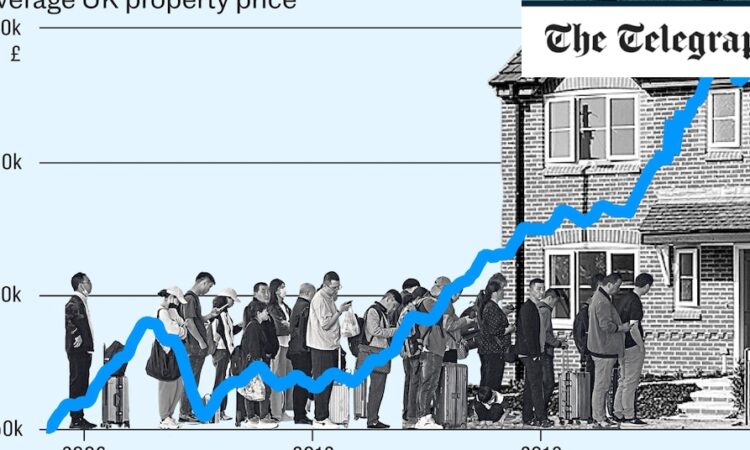
Governments’ own policies bear much of the responsibility for rising house prices, adds Cheshire. It introduced a range of affordable homeownership schemes during the 2010s in a bid to make it easier to get on the housing ladder.
One of them was Help to Buy, which saw the Government give out loans to those wanting to buy new builds, meaning they’d only need a deposit of 5pc of a home’s value.
Cheshire argues that these schemes, which have boosted demand for homes in the face of a relatively fixed supply, bear much of the responsibility for rising house prices.
“If you add anything to demand, prices go up. That’s why Help to Buy was a totally useless and counterproductive policy, and is partly why houses are so unaffordable.”
“The era of cheap money has also played a huge role in driving up prices,” adds Colvile, referring to the historically low borrowing rates offered to homebuyers during the 2010s that made mortgages far more affordable.
The average fixed mortgage rate fell from over 5pc in 2010 to under 2pc in 2021, though has climbed again in recent years.
The toll on renters
Immigrants are more likely to be renters than those born in the UK. Just 47pc of migrants own their own homes, compared to 70pc of those born in the UK.
Those who are foreign-born are almost three times as likely to live in rented homes, according to analysis by the Migration Observatory at the University of Oxford. At least 80pc of new arrivals rent for at least the first few years after they move to the UK, according to previous analysis by the ONS.
There is evidence that immigration has driven up rents. Capital Economics found that in the two years to June 2023, immigration led to an additional 430,000 households wanting to privately rent homes, meaning rents have climbed 11pc higher than they would otherwise have been.
